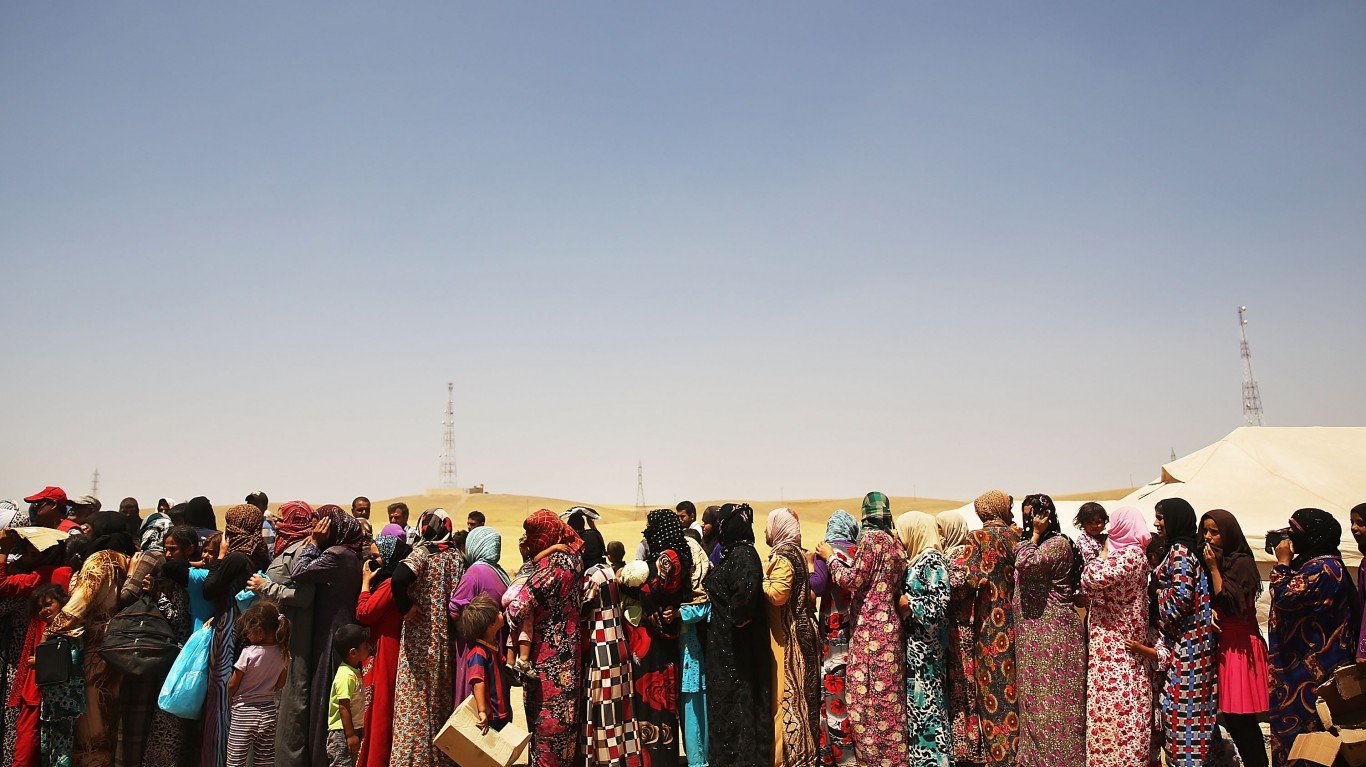
5. Iraq
> Women Peace and Security Index (0 worst to 1 best): 0.516
> Women’s mean years of education: 6.0, #46 worst of 170 countries
> Pct. of women w/bank account: 19.5%, #17 worst of 170 countries
> Absence of legal discrimination (0 worst to 100 best): 45.0 – #10 worst of 170 countries
> GDP per capita, 2021: $4,775, #79 lowest of 170 countries
> Population, 2021: 43,533,592 (females: 21,736,184, 49.9%)
At 45%, Iraq has the highest rate of violence against women perpetuated by an intimate partner, according to the 2021 WPS Index. While only one in 10 Iraqi women are employed, nearly all of them use cell phones, an unusually high share among countries with comparable rates of development. Among laws that discriminate against women in Iraq is one identified by the London School of Economics and Political Science that codifies the husband’s right to punish the wife if the punishment — domestic violence in many cases — was committed “with honorable motives.”
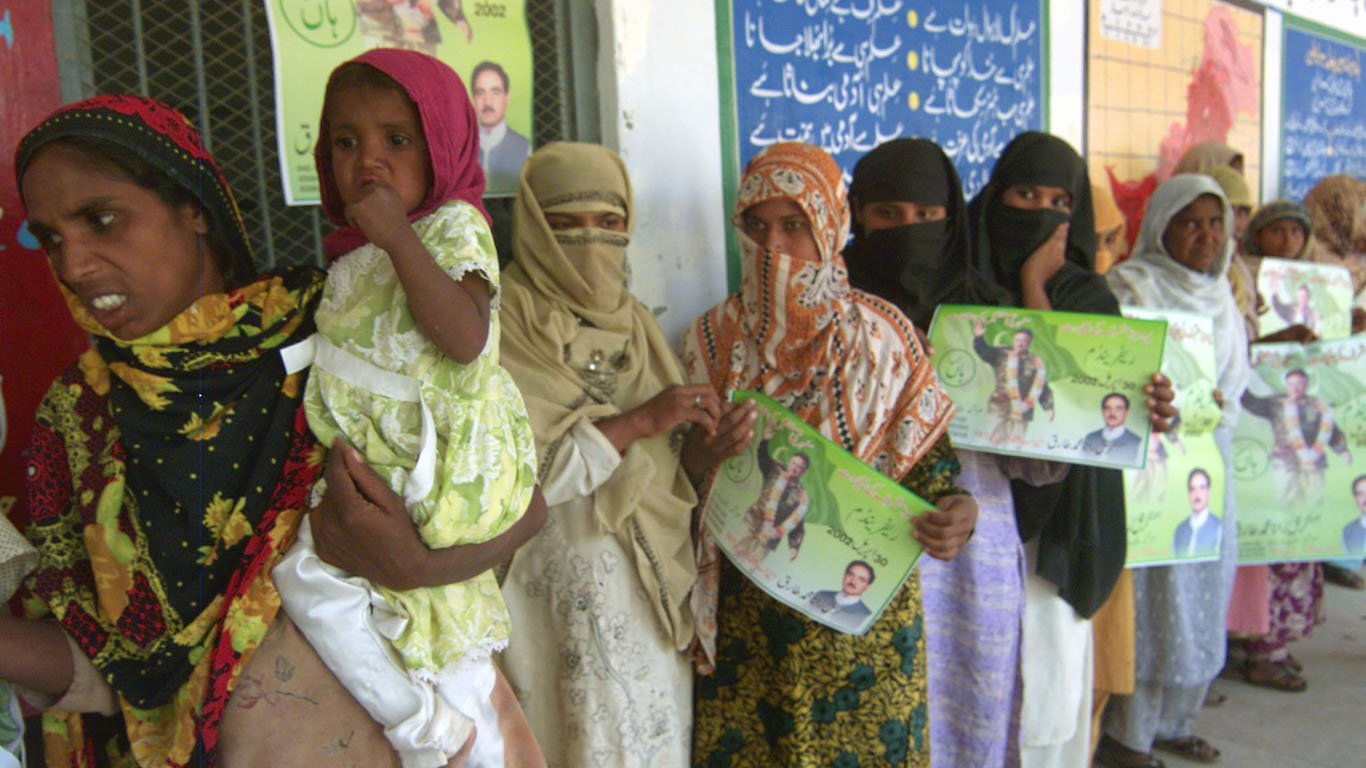
4. Pakistan
> Women Peace and Security Index (0 worst to 1 best): 0.476
> Women’s mean years of education: 3.9, #22 worst of 170 countries
> Pct. of women w/bank account: 7.0%, #4 worst of 170 countries
> Absence of legal discrimination (0 worst to 100 best): 55.6 – #22 worst of 170 countries
> GDP per capita, 2021: $1,505, #35 lowest of 170 countries
> Population, 2021: 231,402,117 (females: 114,586,264, 49.5%)
Pakistan once again scores poorly on the WPS Index, behind Iraq and South Sudan. The number of years of girls’ and women’s education and rates of paid employment has declined since 2017. Though Pakistan has made significant strides in poverty reduction in the past 20 years, there are increasingly stark economic disparities within the country. In other words, the situation for women in Balochistan, the country’s poorest province, is much worse than in Punjab, the country’s wealthiest province.
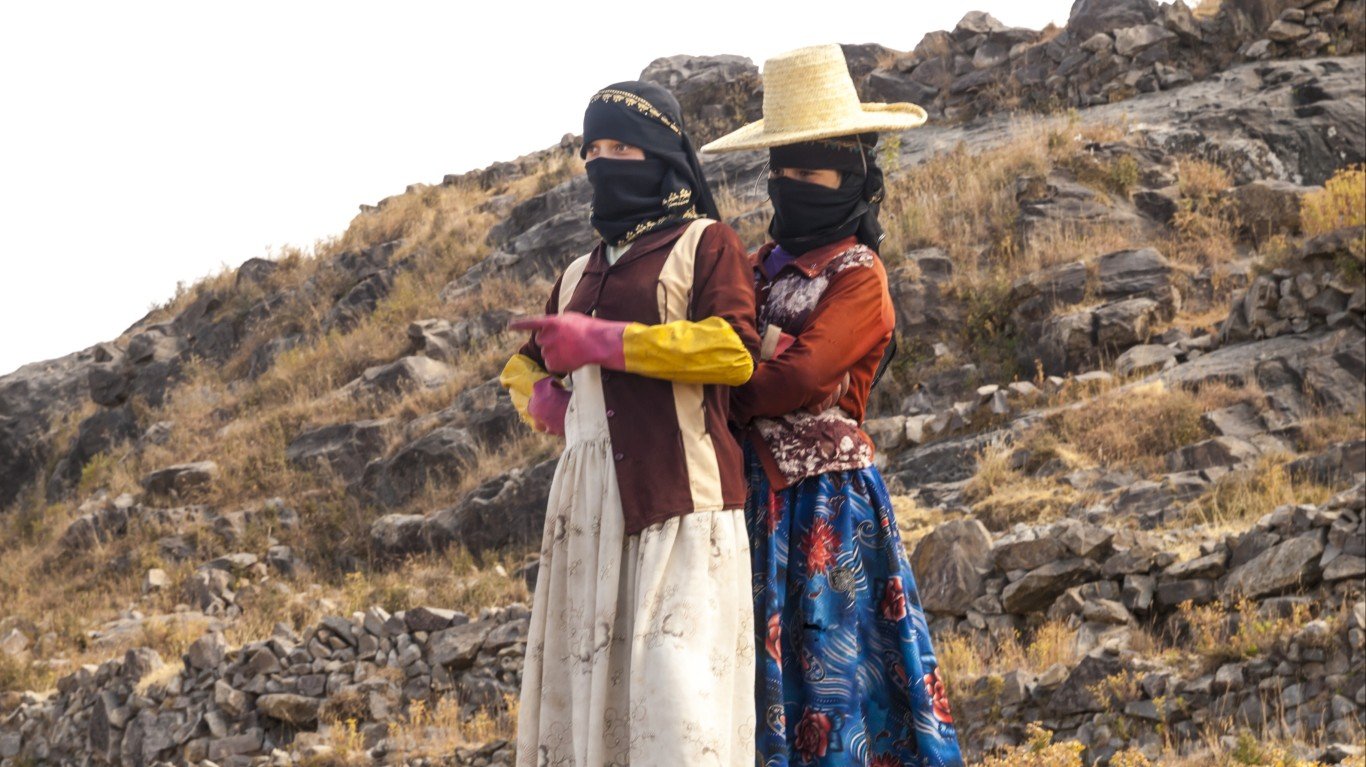
3. Yemen
> Women Peace and Security Index (0 worst to 1 best): 0.388
> Women’s mean years of education: 2.9, #12 worst of 170 countries
> Pct. of women w/bank account: 1.7%, #1 worst of 170 countries
> Absence of legal discrimination (0 worst to 100 best): 26.9 – #2 worst of 170 countries
> GDP per capita, 2018: $702, #16 lowest of 170 countries
> Population, 2021: 32,981,641 (females: 16,313,210, 49.5%)
“Politically, Yemeni women do not exist, as they are completely absent from the decision-making process,” said Bilkis Abouosba, head of the Awam Foundation for Development and Culture and Yemeni women’s rights activist, in a 2022 interview. She pointed out that since the eruption of Yemen’s civil war in 2015, women have been pushed out of political bodies they had served in before the war. Indeed, the 2021 WPS Index shows Yemen has the lowest rate of women’s parliamentary representation, at just 1%. Meanwhile, less than 2% of Yemeni women have bank accounts, and only 5% have paid employment.
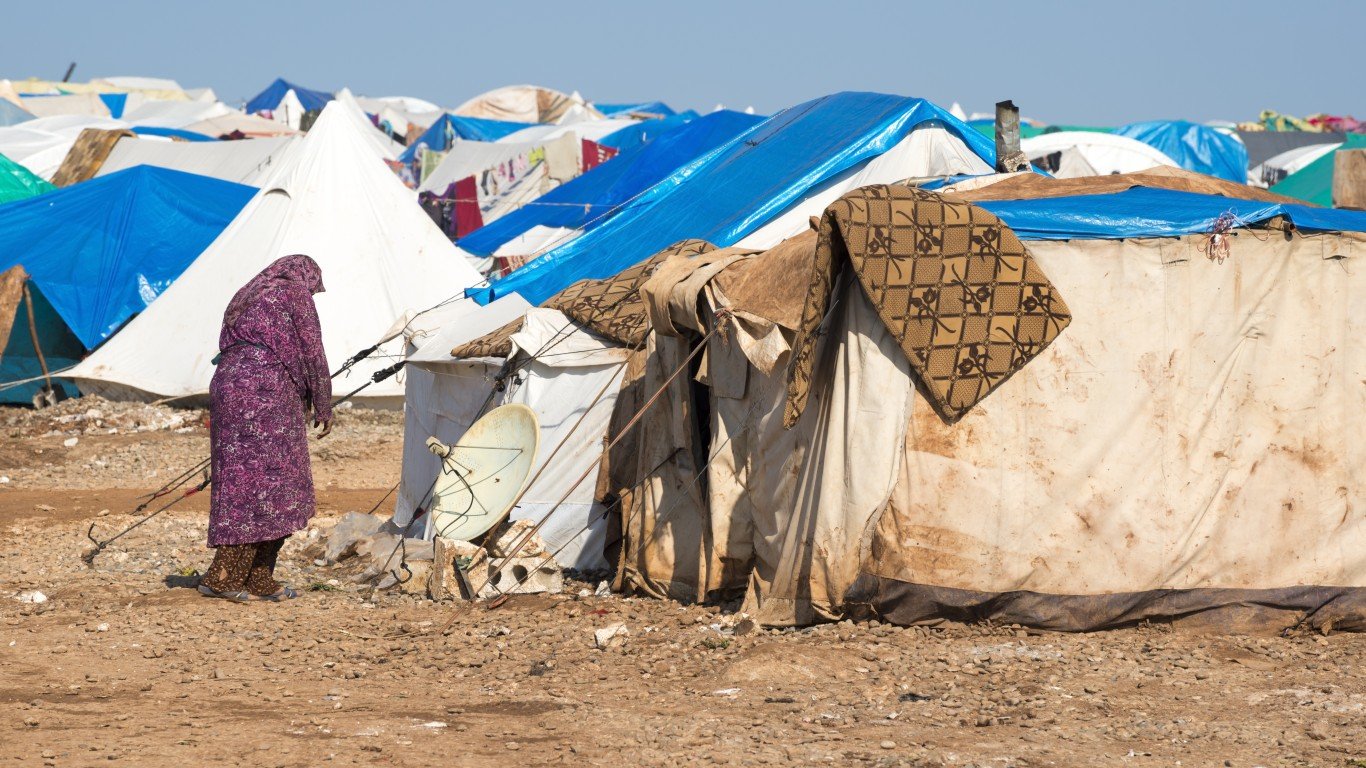
2. Syria
> Women Peace and Security Index (0 worst to 1 best): 0.375
> Women’s mean years of education: 4.6, #34 worst of 170 countries
> Pct. of women w/bank account: 19.6%, #18 worst of 170 countries
> Absence of legal discrimination (0 worst to 100 best): 36.9 – #8 worst of 170 countries
> GDP per capita, 2020: $533, #10 lowest of 170 countries
> Population, 2021: 21,324,367 (females: 10,643,230, 49.9%)
Since Syria’s descent into a multi-sided civil war in 2011, conditions for Syrian women inside the country have eroded. Extremist groups have imposed strict interpretations of Islamic law (Shariah) on women and girls in areas they control that undermine freedoms that women and girls previously enjoyed, “which were a longtime strength of Syrian society,” said Liesl Gerntholtz, women’s rights director at Human Rights Watch in 2014. Thanks to its ongoing conflicts, Syria also ranks high in conflict-related sexual violence and low in women’s inclusion, justice, and security. Only 14% of Syrian women have paid employment.
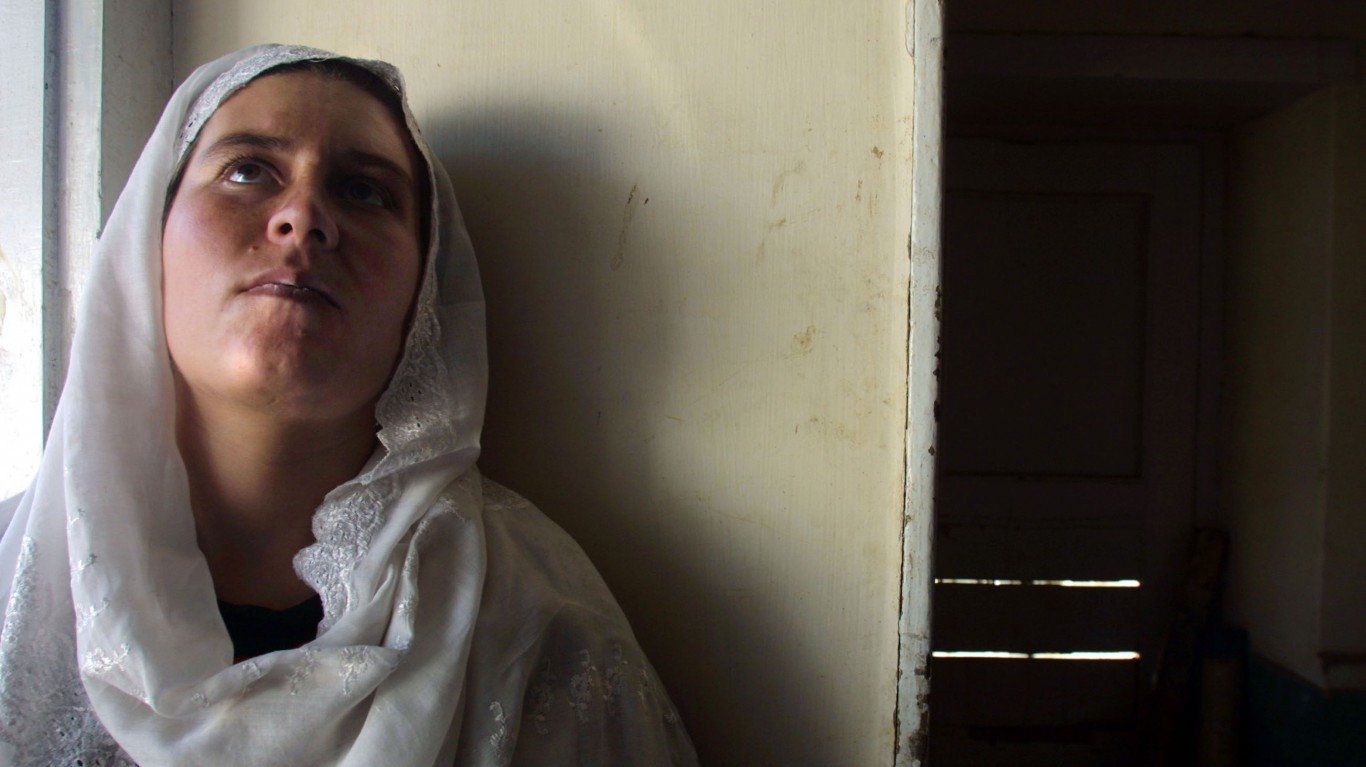
1. Afghanistan
> Women Peace and Security Index (0 worst to 1 best): 0.278
> Women’s mean years of education: 1.9, #6 worst of 170 countries
> Pct. of women w/bank account: 7.2%, #5 worst of 170 countries
> Absence of legal discrimination (0 worst to 100 best): 38.1 – #9 worst of 170 countries
> GDP per capita, 2021: $369, #4 lowest of 170 countries
> Population, 2021: 40,099,462 (females: 19,844,584, 49.5%)
As this list illustrates, countries mired in armed conflict tend to rank low in the rights of women and girls. Since the Taliban returned to power following the complete withdrawal of U.S. and allied forces from Afghanistan in August 2021, the misogyny that typifies these radical fundamentalists has also returned in force. The Taliban not only reconstituted its notorious morality police (the Ministry for the Propagation of Virtue and the Prevention of Vice), it also instituted a ban on women in amusement parks, reinitiated travel restrictions for women, forced women back into face-covering burqas, and banned women and girls from education beyond the sixth grade.





